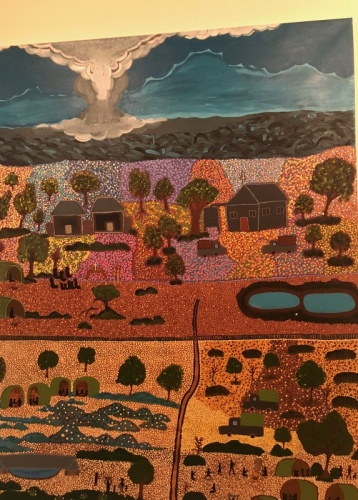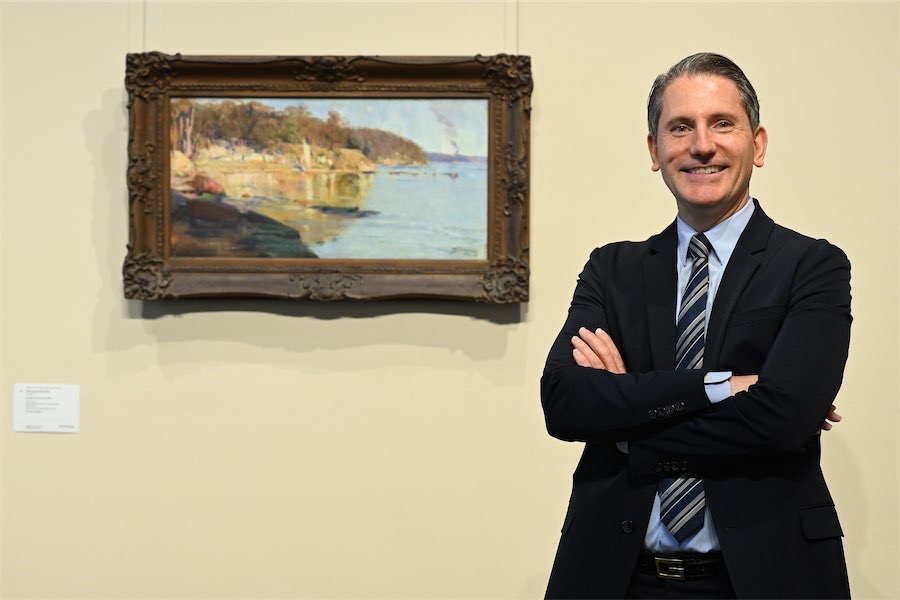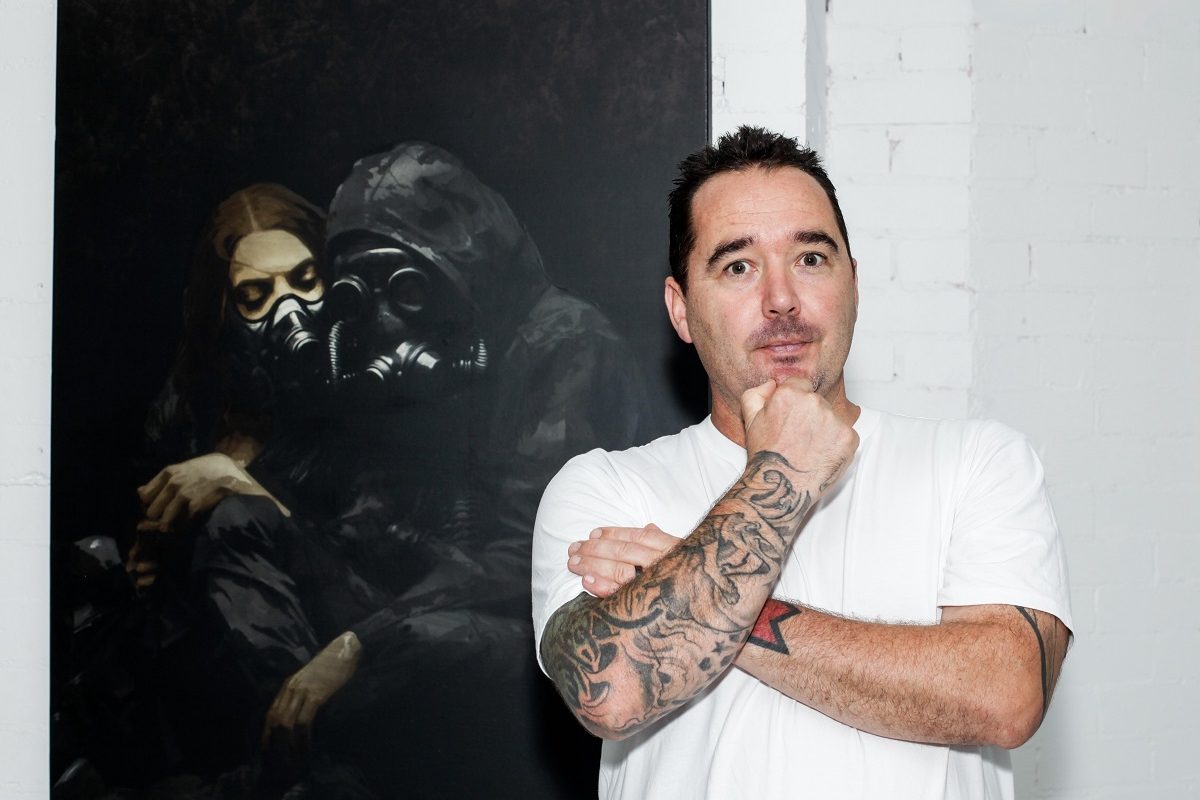
It’s a national touring exhibition of artworks by more than 30 indigenous and non-indigenous artists commemorating the British atomic tests in Australia in the ’50s and ’60s.
Consisting of stories told by elders various generations brought together, it was originally curated in 2016 to mark the anniversary of the first British nuclear tests in 1956 at the Maralinga site, part of the Woomera Prohibited Area in South Australia and about 800 kilometres north-west of Adelaide.

Visitors to the Museum for the packed opening included Ngunnawal elder Violet Sheridan, Aboriginal elder and executive board director of Yalata Anangu Aboriginal Corporation from Ceduna, Mima Smart, Burrinja Cultural Centre board member Janet Turpie Johnston, Matt Posetti and representatives from the Yarra Ranges Council, including Cllr Mike Clarke and Greg Box manager of Arts Culture Heritage.
In Mittmann’s view the exhibition, although dealing with a historical event, comes at a time when we now know the dangers and the risks, especially threats from rogue states to unleash nuclear power. Back in October 1952, he said, when the first nuclear bomb test took place in Australia on Monte Bello Islands in Western Australia the reaction was exuberant, but now we know of the dangers.
“It is surprising how few people are aware that atomic bombs were exploded in Australia, and how little they know about the dislocation of Aboriginal people, the exposure of Australian servicemen and the contamination of the land,” he said.
“Black Mist Burnt Country” features artworks from the past seven decades, selected from public and private collections, including works by Sidney Nolan, Arthur Boyd, Pam Debenham, Toni Robertson, Rosemary Laing, Jonathan Kumintjarra Brown, Judy Watson, Hilda Moodoo and Yvonne Edwards, across the mediums of painting, printmaking, sculpture, photography, new media and music, while exploring the varied perspectives and creative approaches of artists from post-World War II modernists to present-day artists.
The exhibition was developed by the Burrinja Dandenong Ranges Cultural Centre, Upwey, Victoria, and has been on tour nationally since September, 2016, when it marked the 60th anniversary of the first British test at Maralinga. It revisits the history of the British atomic test program at Maralinga, Emu Field and Montebello Islands, examining the impact on people and land, as well as its legacies.

“Black Mist Burnt Country: Testing the Bomb, Maralinga and Australian Art”, First Australians Gallery of Aboriginal and Torres Strait Islander Peoples, National Museum, daily until November 18, free admission.
Who can be trusted?
In a world of spin and confusion, there’s never been a more important time to support independent journalism in Canberra.
If you trust our work online and want to enforce the power of independent voices, I invite you to make a small contribution.
Every dollar of support is invested back into our journalism to help keep citynews.com.au strong and free.
Thank you,
Ian Meikle, editor




Leave a Reply